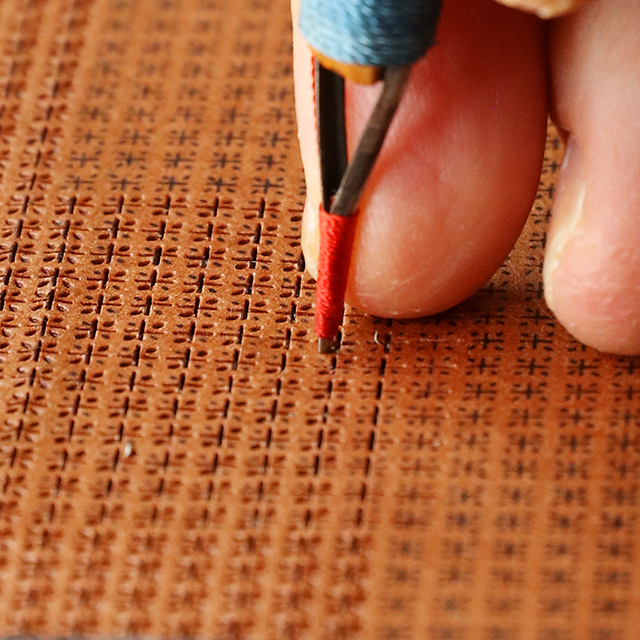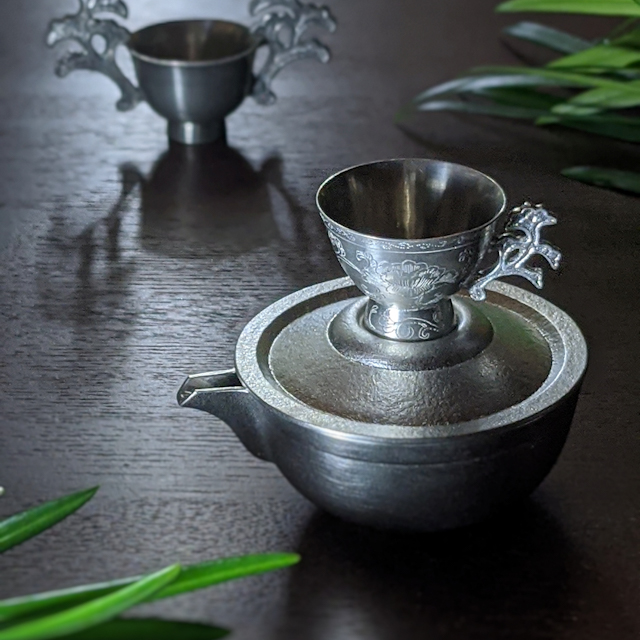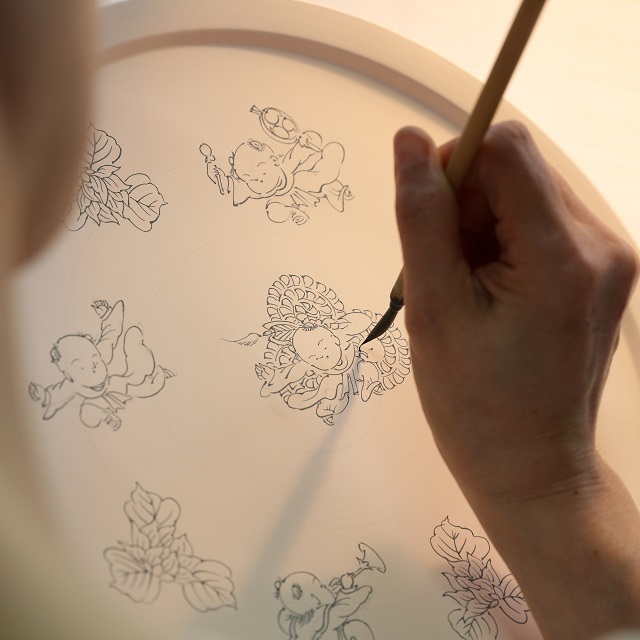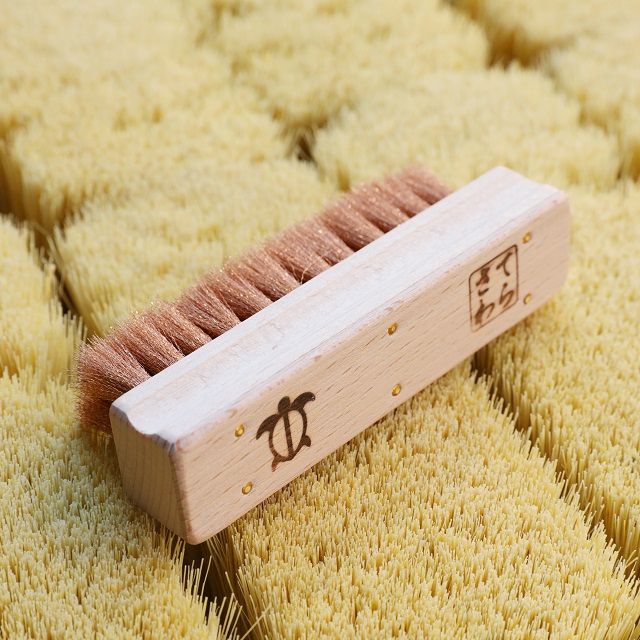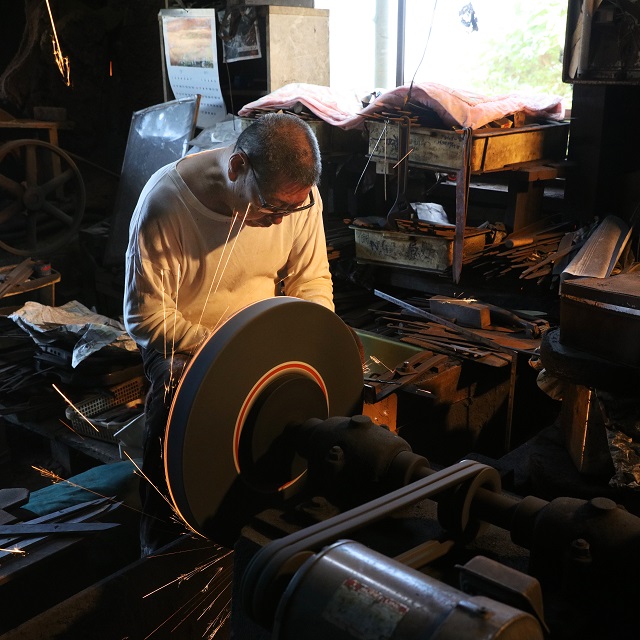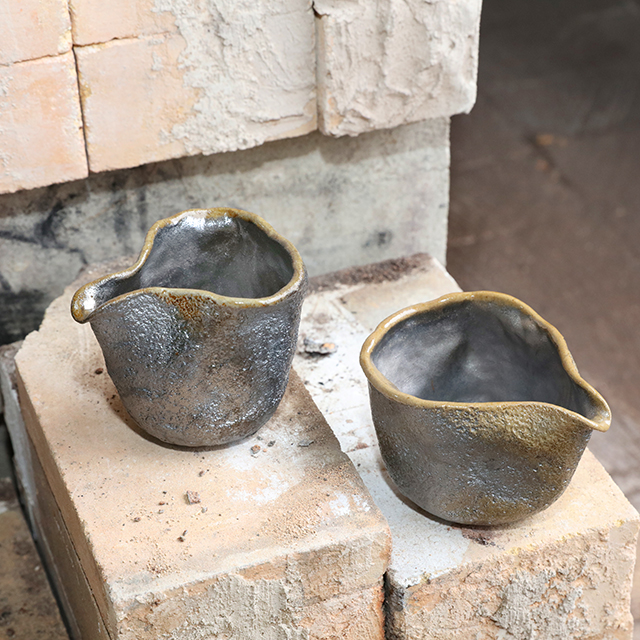Edo komon looks like a solid color when viewed from afar, but is filled with extremely fine patterns when looked at more closely. Surprisingly, over 900 detailed patterns can be dyed onto a single one-inch square.
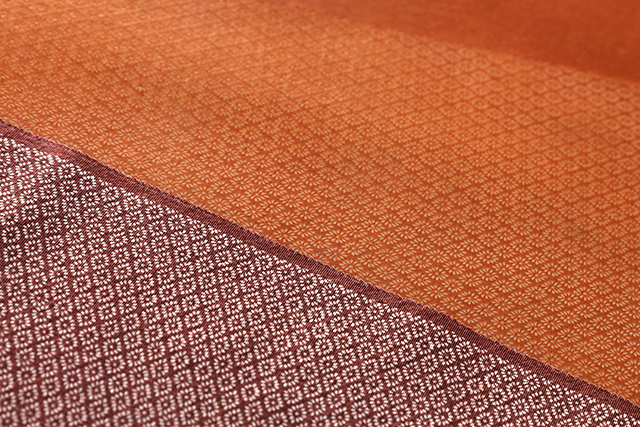
Edo komon (front) dyed with an Ise katagami paper stencil (back)
Its origin is in the patterns of kamishimo, samurai formal attire during the Edo period. Kamishimo were dyed with sadame komon which represented different clans, such as omeshiju for the Tokugawa Shogunate, the samekomon of the Kishu Tokugawa Family, and the kikubishi kakudoshi of the Maeda Clan.
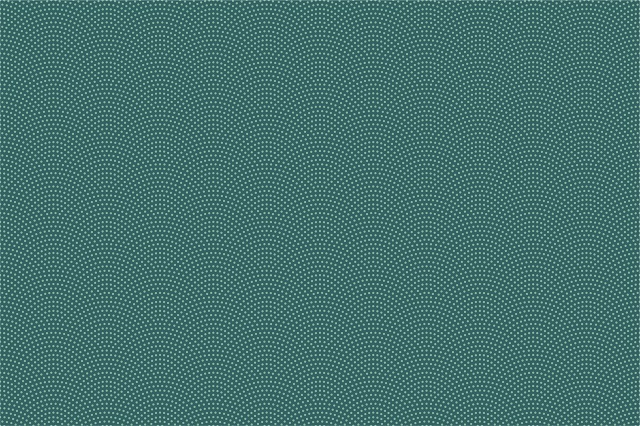
Samekomon, the pattern of the Kishu Tokugawa family. It got its name because it looks like shark skin.
Once a very prestigious komon dying method for samurai families, it became popular among the common people around the middle of the Edo period. Various casual derivative patterns came from this, including plants like cherry blossoms, animals like the plover, lucky symbols such as treasure, and rebus-like images that mean “free of disease” and “prosperous children”.
The paper stencils for this became exclusively the work of artists in the Shiroko-Jike district of Suzuka City, Mie Prefecture. One of the artists who carries on the tradition to this day is traditional craftsman Chiaki Imasaka.
Specialist in “dogubori” that repeatedly cuts uniform patterns with hand tools
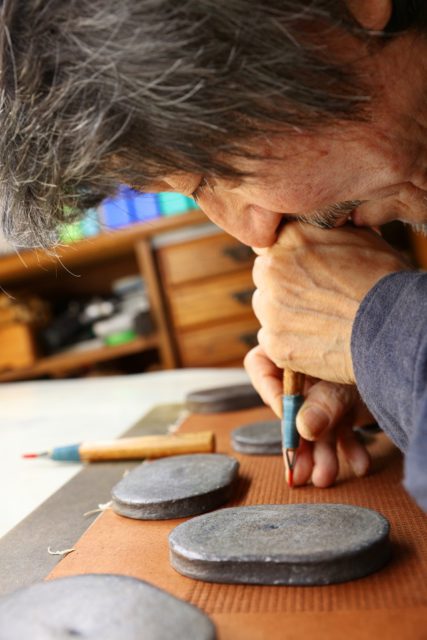 Imasaka cutting a paper stencil
Imasaka cutting a paper stencil
There are four techniques to making Ise katagami paper stencils and one artist is solely in charge of one technique. Imasaka is an expert in dogubori. It is a technique in which tools with special shapes, such as flower petals, rhombuses, squares, and circles, are used to cut patterns into the paper.
Precise handcrafting that must be accurate to within a strand of hair
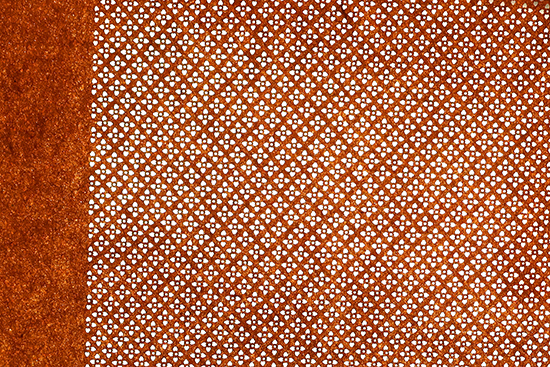
A neat arrangement of four-petal flowers (enlarged), the smaller holes are less than 1mm
Imasaka specializes in a technique called “warimono” in which a pattern of identical shapes is repeatedly cut in detail. In the most intricate one, one 20cm by 40 cm sheet of paper has about 54,000 holes cut into it. This work takes about a month to complete.
“In warimono, if the position of a hole is off by even the width of a hair, that’s all it takes to add a warped line. Since one pattern is used about 70 times to dye a 13 meter piece of cloth that line will be printed 70 times and it becomes very noticeable. I can’t relax until the cutting is finished.”
(Chiaki Imasaka)
Finally, the stencil is looked at through a light, and if even one line is warped then it is unusable and everything starts again from scratch. This precision requires an enormous amount of work, and can be overwhelming.
After about ten pieces of cloth are dyed, then the Ise katagami will become too damaged and its life will end, so you could say it’s a disposable item. And yet, it’s amazing how much of one’s soul has been put into these disposable items.
Interview cooperated with Chiaki Imasaka
photo by sakurado(Takahiro Suwa)







